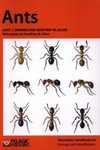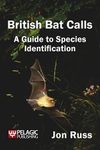Field / Identification Guide Identification Key
By: Helen E Roy(Author), Peter MJ Brown(Author), Richard F Comont(Author), Remy L Poland(Author), John J Sloggett(Author), Sophie Allington(Illustrator), Chris Shields(Illustrator)
142 pages, plates with colour illustrations; b/w line drawings, colour maps
![Ladybirds Ladybirds]()
Click to have a closer look
About this book
Contents
Customer reviews
Biography
Related titles
About this book
Revised from Majerus & Kearns (1989)
This revised and updated edition of Ladybirds provides a succinct but comprehensive and accessible overview of the biology of ladybirds and their parasites, focusing on ecology in an evolutionary context. It provides the latest information, coverage of recent additions to the British list including the harlequin ladybird, and makes suggestions for further research, both short and long term, highlighting gaps in knowledge and showing readers how to get involved with recording and studying ladybirds. It includes updated keys for the identification of ladybirds at late-instar larval and adult stages, and techniques for studying ladybirds and their parasites in both laboratory and field.
The authors hope that Ladybirds will be a valuable resource, not only for students, from school to university and beyond, but also for anyone with an interest in natural history, whether professional or recreational.
Contents
1. Introduction
2. Life history
3. Ladybirds in their environment
4. Ladybirds and their natural enemies
5. Variation in ladybirds
6. Population and evolutionary biology
7. Ladybird distribution
8. Identification of British ladybirds
I: Field key to adult British ladybirds
II: Key to all the adult British Coccinellidae
III: Field key to the larvae of British ladybirds
9. Study techniques and materials
References
Index
Customer Reviews
Biography
Helen E. Roy combined research with teaching for 10 years before taking up a position (research scientist) with the Biological Records Centre (Centre for Ecology & Hydrology) where she is responsible for zoological data and research and works extensively with national zoological schemes and societies. Her research focuses on the effects of environmental change on insect populations and communities. She is particularly interested in the dynamics of invasive species and their effects on native biodiversity.
The ecology of ladybirds is a subject that appeals to the public and throughout her career Helen has taken every opportunity to communicate her research to a wider audience. This has included natural history talks, school visits, bioblitz, popular science articles, podcasts and a significant number of interviews with the media. The arrival of the non-native harlequin ladybird in 2004 captured the imagination of the media and there has been sustained media interest in research on this species over the last six years.
Field / Identification Guide Identification Key
By: Helen E Roy(Author), Peter MJ Brown(Author), Richard F Comont(Author), Remy L Poland(Author), John J Sloggett(Author), Sophie Allington(Illustrator), Chris Shields(Illustrator)
142 pages, plates with colour illustrations; b/w line drawings, colour maps



















































